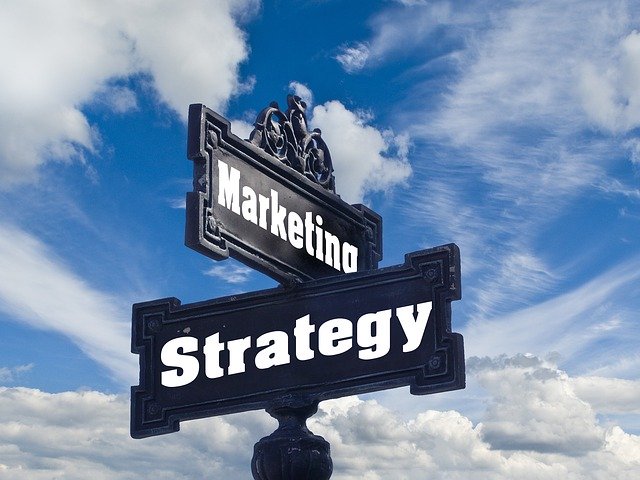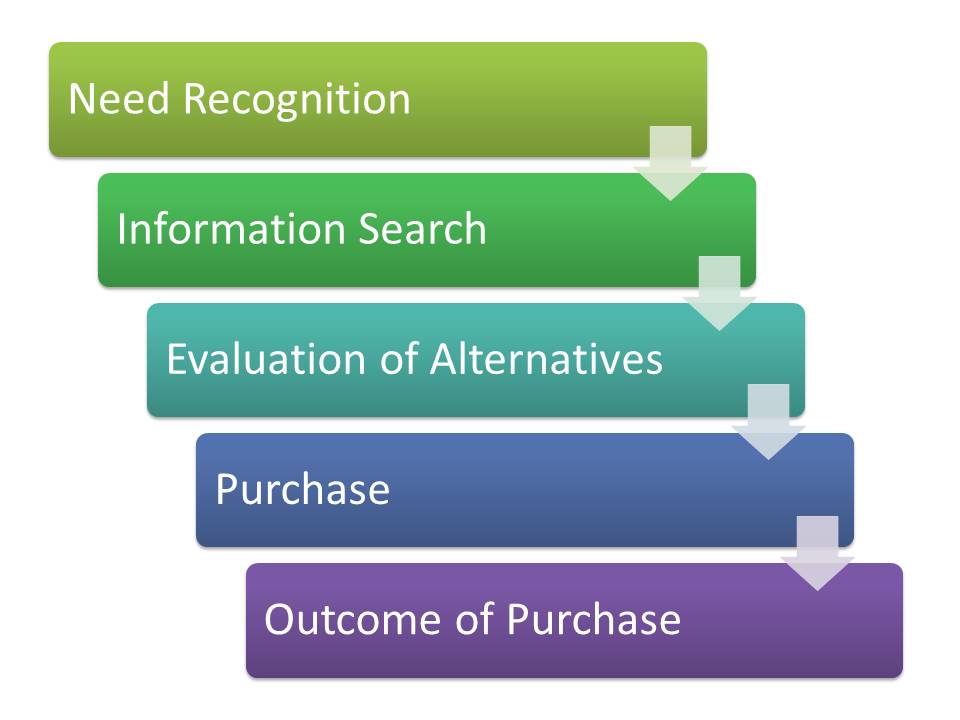Advertisements generally have two kinds of appeal- rational appeal and emotional appeal. Using rational appeal in advertising means giving your target audience a logical reason to buy from you. Using emotional appeal in advertising involves creating an emotional connection between your brand and your target audience.
An advertisement- any advertisement- is an offer made by a brand to provide value to its intended audience. The word ‘value’ is the most important term in Marketing. Everything revolves around it.

An ad is successful when it convinces the ad viewer of its value proposition. Through the ad, the ad viewer becomes familiar with the brand and the value that it offers.
Next time the ad viewer feels a need for a product or service that this successful ad promised to offer, they’re more likely to buy from the brand. This is, in short, the purpose of advertising: to communicate to your potential customers that you have what they need.
Buyer behaviour is one of the most researched areas of Consumer Behaviour for good reasons. It’s not just a simple matter of liking an ad and then purchasing the product advertised. There are other factors involved. But it all comes down to a potential customer’s value perception.
Value is defined as:
Value = Benefits – Cost
The value of Value in the above equation should be positive (preferably large) if we are to increase the probability of a potential customer buying our product.
This is why advertisers often highlight, and sometimes exaggerate, the benefits of a product or service they’re offering. They’re trying to increase the Benefits-perception of their potential customers to make Value as large as possible.
On the other hand, Cost in the above equation is mainly the monetary price that consumers pay. The advertisers try to diminish Cost as much as possible to ensure that Value is as large as possible. This is usually done by offering price discounts.
When you see a price discount on an item you know can benefit you, you’re swung into action and you instantly make the purchase. This is because you perceive the benefits of the purchase to be very high compared to the costs. You’re offered more Value.
Other ways advertisers reduce the perceived costs for potential customers is by explaining how their product or service can save time, effort and energy.
Consider what would happen if advertisers offered the same set of Benefits at a higher Cost in the pursuit of making more profits.
The Value offered to the potential customer will get closer and closer to zero, making them unlikely to buy. If the potential customers perceive the Cost to be higher than the Benefits, Value will be negative and they’ll avoid the product like a plague.
Now, what should advertise do if they want to increase the price of their products so they can earn more profits? Of course, they should promise more Benefits to maintain a large Value.
But, sometimes, companies can get away with charging a premium for their products without adding significant benefits.
For instance, Apple has been releasing iPhone models that don’t offer significant benefits over previous models. Yet, consumers keep buying the latest models at higher prices. Why?
It’s not that the above equation has failed in this case. It’s just that the functional benefits of a product are not the only benefits that consumers appreciate. They’re also sensitive to the psychological benefits of owning certain products, being associated with, and having an emotional connection with certain brands.
These things maintain a large Value despite a significant increase in Cost.
Unsurprisingly, research shows that consumers having an emotional connection with a brand are less price-sensitive. They’re willing to pay a premium as long as the brand continues to emotionally satisfy them.1
How emotions influence buying behaviour
The importance of trust
In a perfectly rational world, you see a product or service offering you significant value (many benefits, fewer costs), you make the purchase. Who the seller is, your past experiences with them or your friend’s attitude towards them shouldn’t matter. But we don’t live in a perfectly rational world and these things matter.
The key thing that many business owners don’t seem to understand is that it’s difficult for potential customers to trust the advertiser’s message right away. So they have to rely on other social cues to decide whether or not they should make the purchase decision.
This is why companies use what’s called social proof to convince their potential customers that they’re good to do business with. They show off the number of customers they already have and other well-known brands they’ve worked with. This creates trust and security.
We may have evolved out of caves and tribal living, but our need to rely on others for making decisions is still strong.
Our ancestors who lived in tribes had to form close associations with their kin and friends to survive. They also needed to be wary of rival tribes that were bent on raiding and exploiting them.
It’s for this reason that people don’t just buy valuable products from anyone; they buy them from the brands they like and trust. Showing your potential customer that your product has this, this and this benefit is not enough. You have to give them a reason to like and trust your brand.
Therefore, advertisements, which are usually the first contact between potential buyers and a brand, should not only have rational appeal but also emotional appeal. The audience should like and trust the brand and its message.
Why do you think people say things like, “That company has been around for a decade” or “This brand has won several awards”? These things increase the trust-perception of the brand. These phrases are usually uttered to people who’re on the fence about buying from a particular brand.
Later in the article, I’ll throw more light on the customer decision-making process.
Power of emotional appeal in advertising
Another important aspect of brand perception is what emotions a brand triggers in us. As some wise fellow has pointed out, humans are creatures of emotion, not reason. Rational thinking, critical thinking, planning, evaluating benefits and costs before decision-making are not things that come easily to people.
All these advanced cognitive tasks take up lots of mental resources. Therefore, our emotions typically override these processes in decision-making.
Ask yourself: Is it easier to rationally count your calories and maintain a calorific deficit to lose weight or to succumb to the temptation offered by fast food?
The ‘ease of processing’ that emotions provide us helps us make decisions (including buying decisions) quickly, overshadowing reason and rationality in the process.
Research shows that marketing campaigns containing purely emotional content perform twice as well compared to campaigns containing rational content.2
Emotions and memory
If I ask you to recall an event from your past, you’ll likely recall an event that holds an emotional significance for you. This shows that strong emotions and memories are intertwined.
Now, if you were shown an ad without an emotional message and an ad with an emotional message, which one do you think you’re likely to remember in the future?
Why is it important that advertisers ensure that their ads are recalled by potential customers?
Well, the longer an ad lingers in the mind of a potential customer, the more likely it is that they will consider the brand when making a purchase decision.
A common way advertisers ensure that their target audience remembers their ad is by showing the ad repeatedly. Familiarity breeds likeability, and sometimes contempt as well. But the thing is, repeat exposure pulls a brand out of the limitless, dark ocean of the ‘unknown’ into the realm of the ‘known’.
How many times have you come across a brand whose offer attracted you, but you stopped short of buying because you hadn’t heard of them? You asked your friend about them and they hadn’t heard of them too. Unfamiliarity breeds mistrust, always.
On the contrary, a brand you’ve known, or at least heard about, generates some level of trust in you and nudges you toward giving them a try. This is why advertising is a thing. It works. It’s especially important for new brands trying to carve a space in the minds of their target audience.
Positive and negative emotions
Now that you know how effective emotional appeal is in advertising, the next important question is: What type of emotions should ads seek to trigger?
Emotions are broadly classified into positive and negative emotions that vary in intensity. Generally, it’s a better strategy to evoke positive emotions through ads, even though both positive and negative emotions can create lasting impressions.
Positive emotions let audiences create positive associations with the brand, which, in turn, lead to positive brand attitudes.
However, going overboard with trying to elicit strong positive emotions is not a good strategy. Studies show that a mild, pleasant emotional tone elicits the strongest attitude toward the brand, and intention to share the message of the brand.3
Evoking negative emotions via advertising can backfire. When Nationwide, a US-based insurance company, aired this ad during the Superbowl sporting event, it resulted in a backlash:
While the ad had an important message, it was disturbing to many people- some even called it depressing. I, sitting here in my room with a neutral emotional state, found nothing discomforting about it.
But when you’re attending a huge sporting event in a festive mood with your friends and family, and thousands of people, I can see how this ad can be incongruous and distressing. It’s the same reason why cracking jokes at a funeral is socially unacceptable. You can’t go against the general mood of the crowd.
Consumer decision-making process
The generic consumer decision-making process that Marketing students are taught in universities looks something like this:

The above model is pretty straightforward and doesn’t require elaboration. The third stage of the model i.e. Evaluation of Alternatives is where emotional advertising influences the consumer decision-making process. This is the stage where the consumer evaluates the available alternatives, choosing one that provides maximum perceived value.
The role of advertising is to make a brand and its offer more valuable to the potential customer.
When you think of buying something, you often have a list of brands in your mind that you know can potentially satisfy your needs. This list is formed by your experiences, information search, and exposure to advertising. As you evaluate these alternatives, you narrow down the option that offers you the greatest perceived value.
Advertising not only makes you recall a brand and its offer, but also makes you attach a value to the advertising message. This value can be in the form of product benefits, unique features, discounts, and, sometimes, emotional connection.
If an ad successfully evokes positive emotions in you, you associate the brand and its offer with these positive feelings. These positive feelings attach additional value to the brand and its offer during your purchase decision, making you opt for the brand over other available alternatives.
As discussed earlier, you’re more likely to recall memories with an emotional tinge. Therefore, emotional advertising that shows a brand in positive light succeeds on two fronts during the Evaluation of Alternatives stage- creating positive brand associations and improving recall.
You’re more likely to buy from a brand you like and can recall quickly when making a purchase decision.
Other than using emotions, advertisers also use things like creativity and humour to stand out from the rest and improve brand recall.
Let me give you a real-life example of a brand that used emotional advertising to reach its marketing goals:
The case of John Lewis
John Lewis is a UK-based department store that offers a wide range of products. They published a paper for the Institute for the Practitioners in Advertising (IPA), detailing the marketing campaign that they carried out from 2012 to 2015 (you can access the paid case study here).
Gift-purchase during the Christmas season comprised a large share of their revenue each year. Christmas enabled John Lewis to pay bonuses to its employees every year. But things were not going well lately in the UK retail scene. John Lewis’ sister retailer Waitrose had been generating low profits. Many stores in the UK had run out of business.
The store set a goal to generate more sales that would help pay employee bonuses. The plan was to leverage the upcoming Christmas season to increase sales and market share. They designed an advertising campaign with the goal of ‘getting more customers to spend more’ by ‘increasing the propensity to shop at John Lewis for Christmas gifts’.
Their IPA paper specifically mentions that John Lewis had two goals in mind:
1. Salience
John Lewis should spring to mind as the first port of call (recall).
2. Emotional connection
John Lewis needs to feel special, a destination shop (positive association).
John Lewis had focused on what they call the ‘thoughtful gifting’ strategy. As with any marketing campaign, the first step is defining your target market. John Lewis appeals to educated and affluent customers who put more thought into buying gifts for their loved ones.
John Lewis adopted an Integrated Marketing approach to their advertising. They used both traditional and digital media to run their advertising campaign.
Their core campaign consisted of running a Christmas film on TV and the internet. The ad film was packed with emotion, reminding people how special their loved ones were to them.
It’s called The Journey. Check it out:
The ad did three things: First, having emotional content, it made a lasting impact on the viewers’ minds. Second, it featured snowmen. Snowmen are symbols of Christmas and are loved by everyone. Third, the ad was creative in how it gave life to a lifeless snowman who even undertook a journey for his beloved snowwoman. This gives the ad that magical and special quality. It’s creative and distinct.
The ad campaign increased John Lewis’ Christmas sales by 44%. They ran similar emotionally charged ads in the following years with similar results. They made eight times the money from sales that they spent on advertising.
Once they occupied a place in the minds of viewers, John Lewis continued to immerse them in their ad story through multiple touch-points.
They created ad-themed books, merchandise, micro-sites, in-store experiences, apps and even social media accounts dedicated to characters featured in their ads. The songs featuring in the ads played on radio throughout Christmas, serving as gentle reminders of the ad and the brand.
Doing all these things enabled John Lewis to create top-of-mind awareness for their brand in potential customers. Also, people associated the good feelings they experienced while watching the ads with the John Lewis brand. These emotions helped them recall John Lewis easily when they thought it was time to purchase a gift for their loved ones.
References:
- Panda, T. K., Panda, T. K., & Mishra, K. (2013). Does emotional appeal work in advertising? The rationality behind using emotional appeal to create favorable brand attitude. IUP Journal of Brand Management, 10(2), 7.
- Dooley, R. (2009). Emotional Ads Work Best. Neuromarketing. July, 27.
- Eckler, P., & Bolls, P. (2011). Spreading the virus: Emotional tone of viral advertising and its effect on forwarding intentions and attitudes. Journal of Interactive Advertising, 11(2), 1-11.
